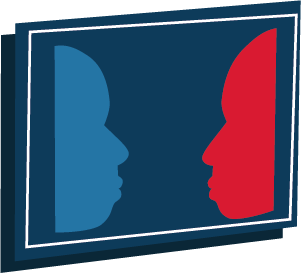Manifestations of Culture
Back to: What is Culture?
Every person is born into a certain culture which means in a complex system with values, attitudes and acting habits.
Accordingly, the individual develops patterns of thinking, feeling and acting that are determined by the cultural environment. This process of „mental programming“ (Hofstede, 2001) has a lot of sources in the social world: family, school, work place, relationships and everywhere where humans live and meet each other. Hofstede speaks of „collective mental programming that distinguishes the members of a group or category from others“ (Hofstede, 1997).
A category here is a group of people who have something in common:
For example their gender, the generation they belong to or the region where they live. Thus, also within a certain society there can be different cultures or sub-cultures. Young urban academics can have a very different cultural determination in comparison to older working people living in the countryside, even when they share the same region and language.
All human beings share basic needs that are not cultureally determined (e.g. nutrition, movement, the wish for social exchange) and basic emotions such as fear, joy, grief and anger. This is what we call „Human Nature“. But the way in which all those basic needs are expressed depends from the cultural background we live in and is developed in a learning process. And eventually, the individual personality is a combination of inbred and culturally learned attitudes and behavioural patterns.
Cultural Levels
Every human being belongs to a number of different groups and categories that culturally influence him or her. These cultural levels can be
- a national level, referring to the respective country;
- a regional, ethical, religious or linguistic level;
- a level of gender, generation or social status.
The „mental programmings“ of the different levels do not always correspond to each other. A certain behaviour that is well respected in one group can be disapproved or rejected in another group. Therefore, every individual is challenged to develop a personal and unique system of norms and values.
Culture as an Onion
There are many ways to visualise the concept of culture. One of the most popular models is the „Onion Model of Culture“ by Geert Hofstede.
[weglot-image en=“/wp-content/uploads/2018/11/cultural_onion.png“ de=“/wp-content/uploads/2019/11/cultural_onion_de.png“ gr=“/wp-content/uploads/2019/11/cultural_onion_gr.png“ it=“/wp-content/uploads/2019/11/cultural_onion_it.png“ sl=“/wp-content/uploads/2019/11/cultural_onion_sl.png“ class=“aligncenter“]
It shows how culture has a number of layers. The model defines the following layers:
Symbols
Symbols: The outer layer, furthest from the core of the onion, represents cultural symbols (images, words, gestures, objects) such as flags, architecture, language or traditional clothing; symbols are what most people think of as „typical“ for a certain culture;
Heroes
Heroes: These are persons that represent characteristics highly appreciated in a culture; the persons can be living, dead, real or fictional, even comic-strip characters; they serve as role models for many members of the culture;
Rituals
Rituals: Rituals are conventionalized acting patterns that are used in specific situations (e.g. conversation routines, welcome rituals, meal traditions, religious practices); they are not really necessary, but are regarded as essential for social interaction;
Practices
Practices: They represent the way in which symbols, heroes and rituals are implemented in everyday life;
Symbols, heroes, rituals and practices are „visible“; they can be observed and identified by outsiders;
Values
Values: In the centre of the onion are the underlying values and cultural assumptions that influence all of the other layers. These beliefs, norms and attitudes are not directly observable; they just can be recognised by deeper analysis and thorough understanding of each of the layers and their interaction.
Self Reflection

Please think of a certain culture – maybe the country, region or town where you live. What are typical symbols in this culture?

Which heroes or role models do you know? Which typical rituals can you specify? Please try to define three values that can be derived from the symbols, heroes and rituals! We warmly invite you to share your outcomes in the forum.
Open the forum  Please think of a certain culture – maybe the country, region or town where you live. What are typical symbols in this culture?
Please think of a certain culture – maybe the country, region or town where you live. What are typical symbols in this culture?